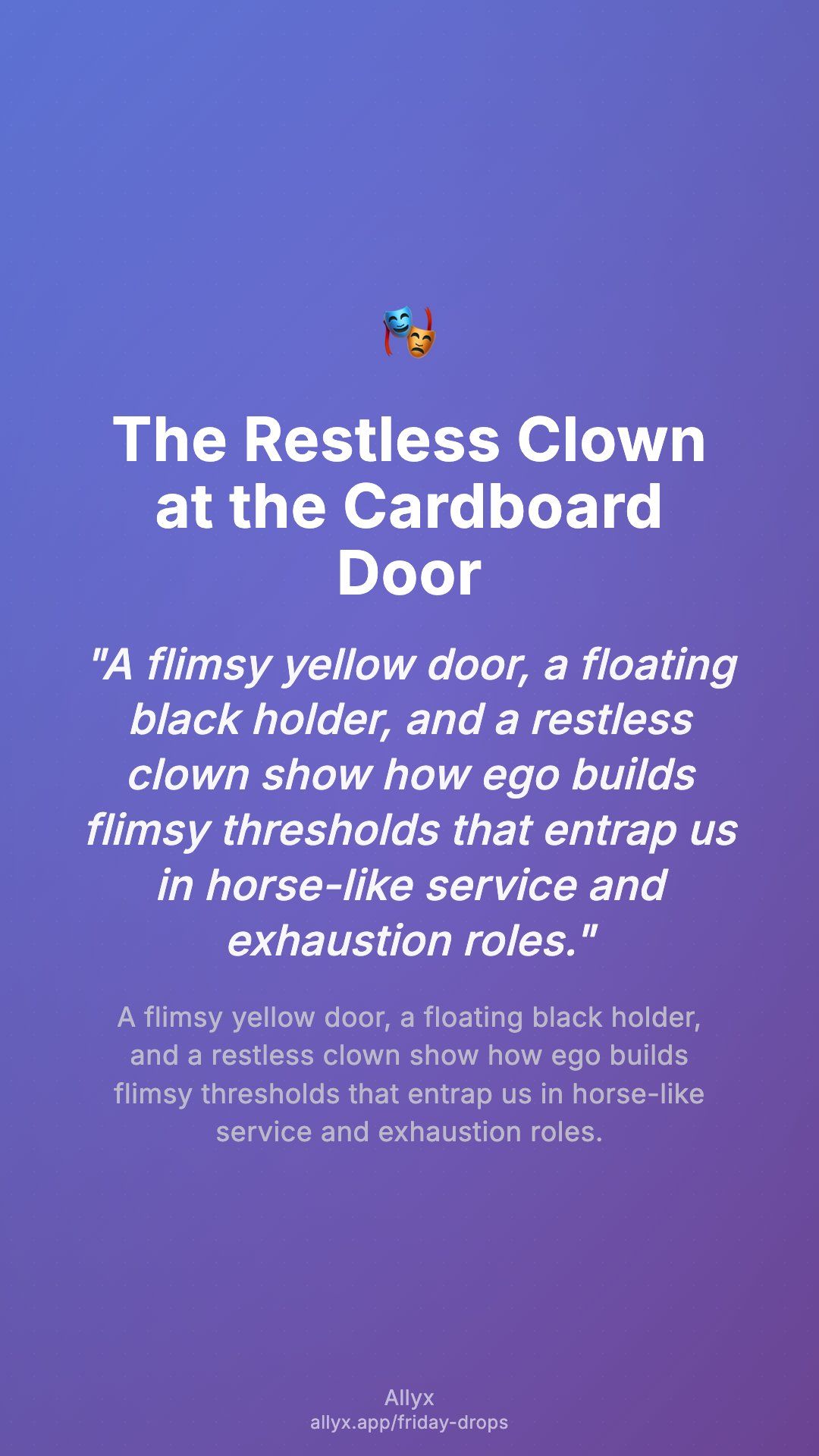The Restless Clown at the Cardboard Door
A flimsy yellow door, a floating black holder, and a restless clown show how ego builds flimsy thresholds that entrap us in horse-like service and exhaustion roles.
Thursday, September 18, 2025
Metaphorical Narrative
A yellow door stands in a strange hallway. Not wood, but rough cardboard, painted by time to look sturdy. Beside it, a black metal holder floats in uncertain space — neither fixed to the door nor free of it. A clown waits here, restless, twitching, unable to decide.
He could sit and watch people pass. He could trap his own hand in the holder, immobilising himself. He could cling to the door, moving only when others push it open. Every option feels like performance, not freedom. The door itself is flimsy, but the clown acts as though it is made of iron.
Behind the act, you notice another pattern: horses in shadow. Service, fight, war, exhaustion, bondage. All the old roles that trained the body to serve, resist, or collapse under reins. The clown fidgets because he knows — the moment he crosses this door, he may be harnessed again.
Core Insight
The cardboard door is ego’s false structure: flimsy, but convincing enough to keep you rehearsing roles. The floating holder is the ego’s trick of ambiguity — a “support” that doubles as a trap. By engaging with it blindly, you become immobilised, not stabilised. The restless clown is the part of you caught in absurdity, torn between doing nothing, doing too much, or waiting for others to act first.
The horses appear because they embody the deeper script: life as endless service or conflict. Ego has taught the body to move like a warhorse — useful, obedient, exhausted — even when the war is long gone. The clown’s restlessness is the nervous system remembering the reins, even when no one is holding them anymore. What looks like a door is only cardboard. What looks like bondage is only memory.
Saturday Experiment
- When hesitation shows up, name it: “This is the clown by the cardboard door.”
- Look at the choice in front of you. Is it real wood, or only flimsy card painted yellow? Test its strength.
- Step through without using the holder. Refuse the harness. Notice the moment your body stops waiting for someone else to open the way.
Sunday Reflection
- In third person: He saw the door as cardboard. He realised it had no power once he touched it.
- How often did he act like the clown — restless, trapped in absurd rehearsal?
- What horse-role was he rehearsing this week: servant, fighter, or exhausted beast?
- When he crossed without the holder, what changed in his body’s rhythm?

